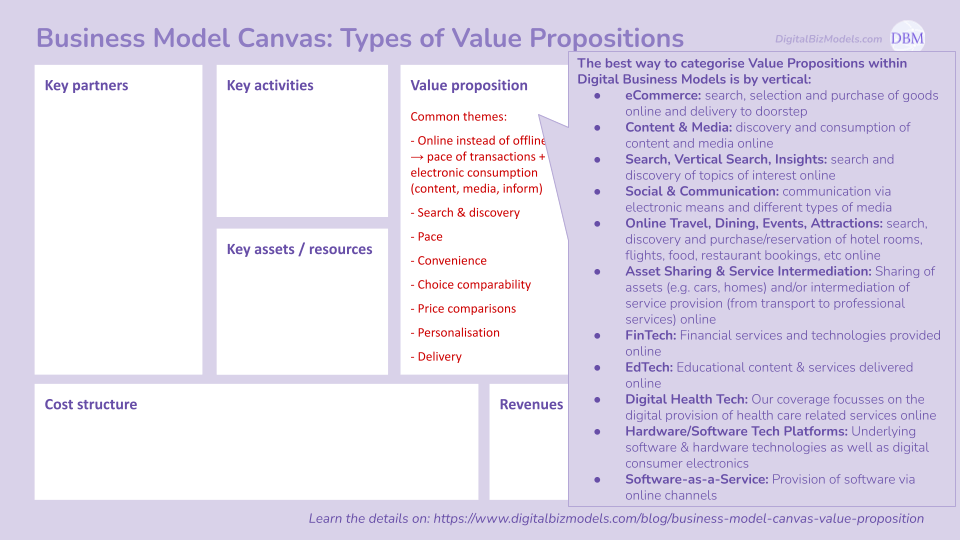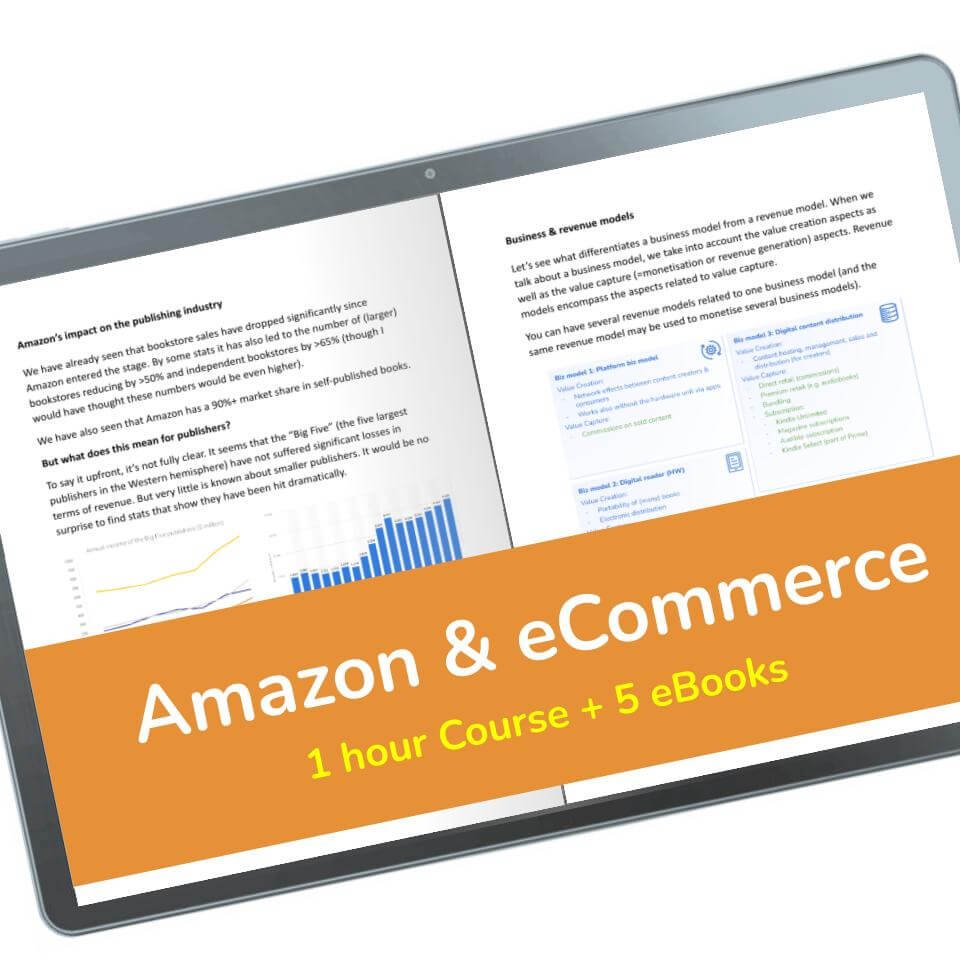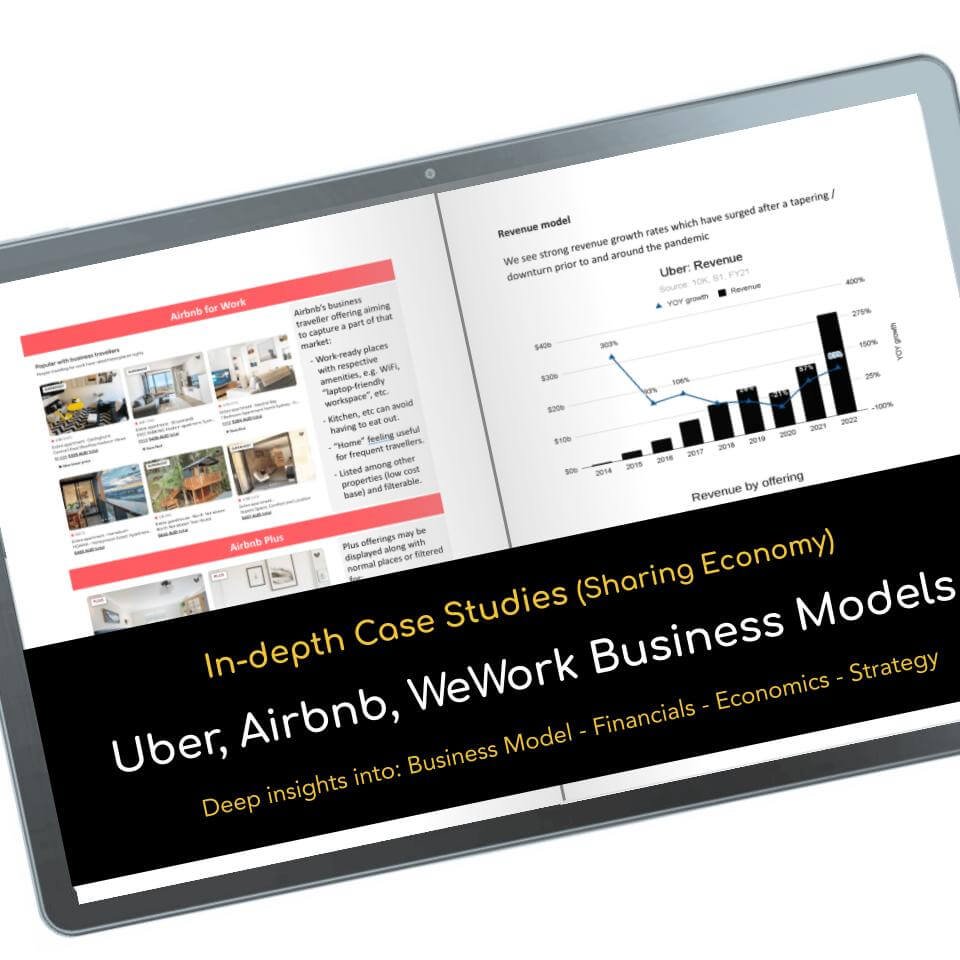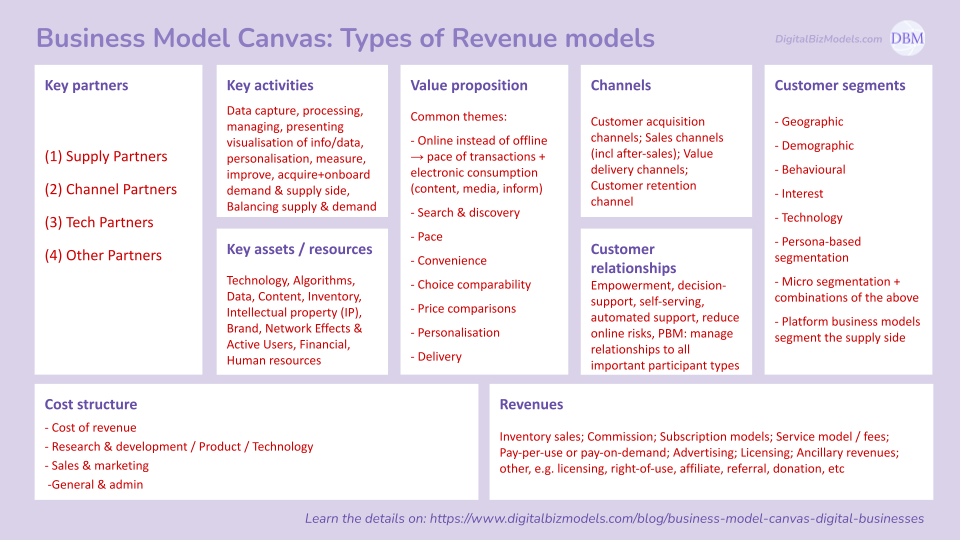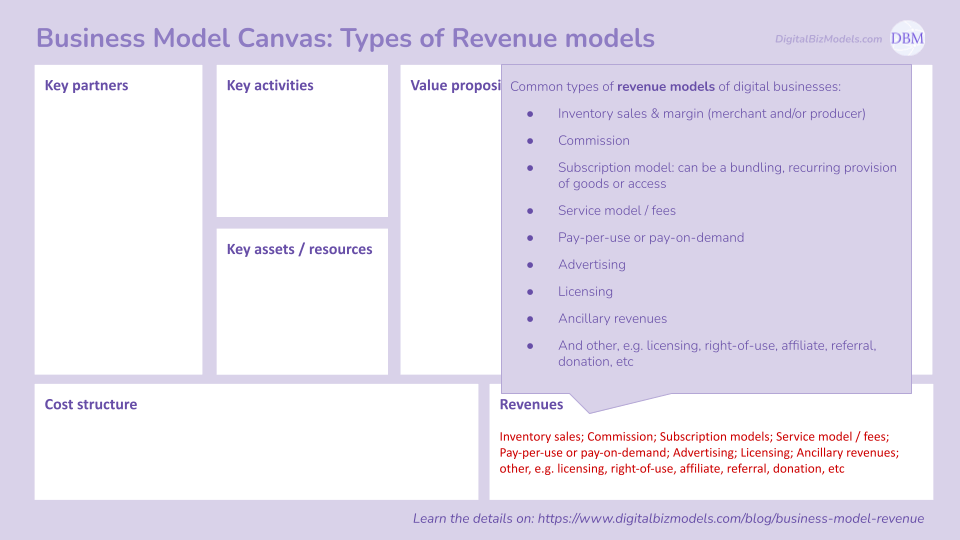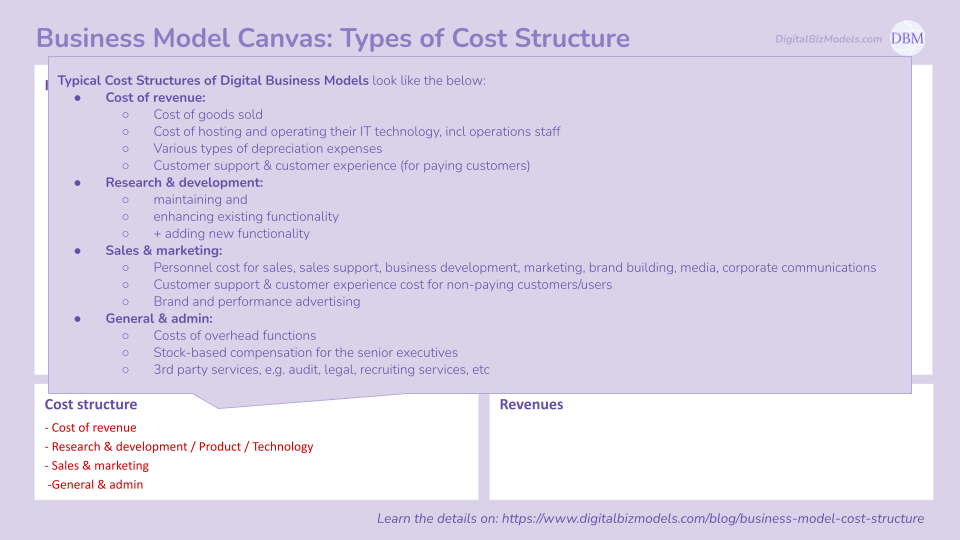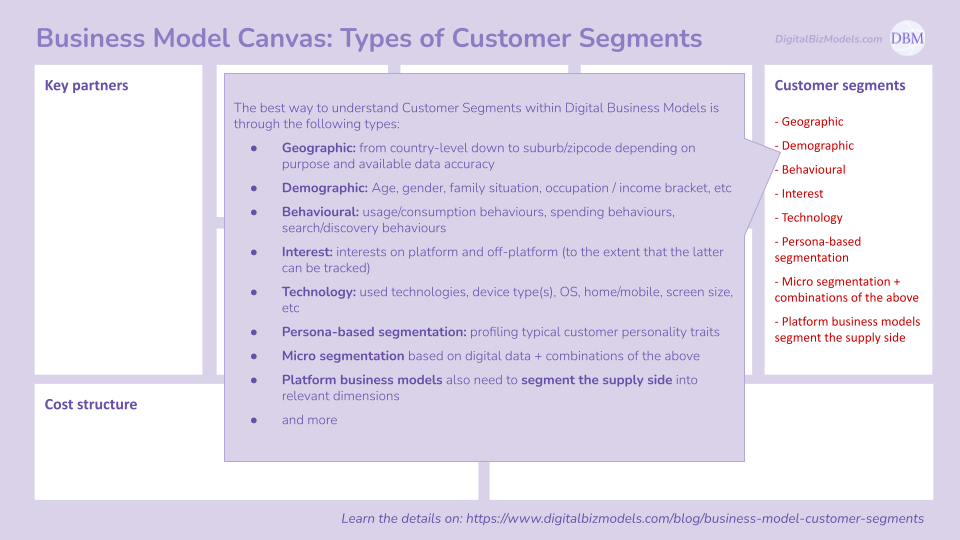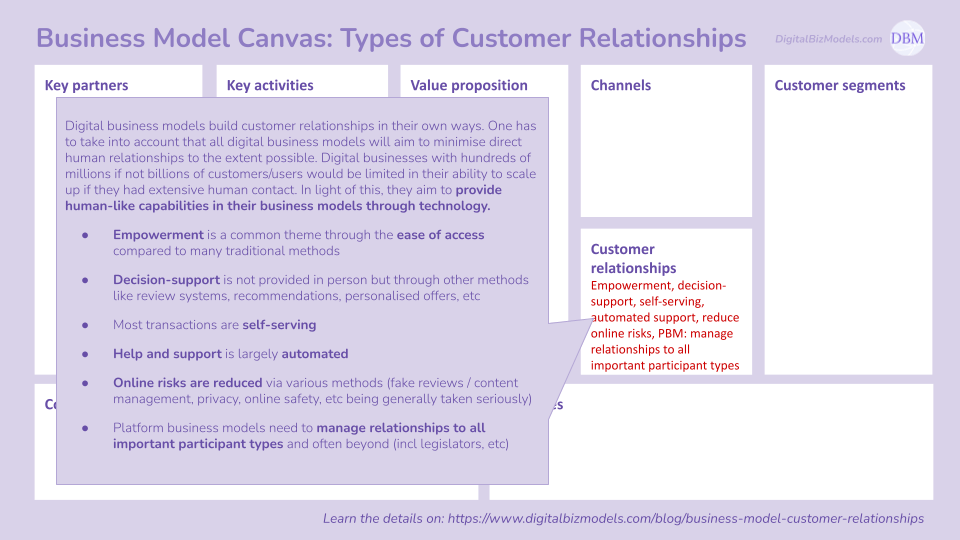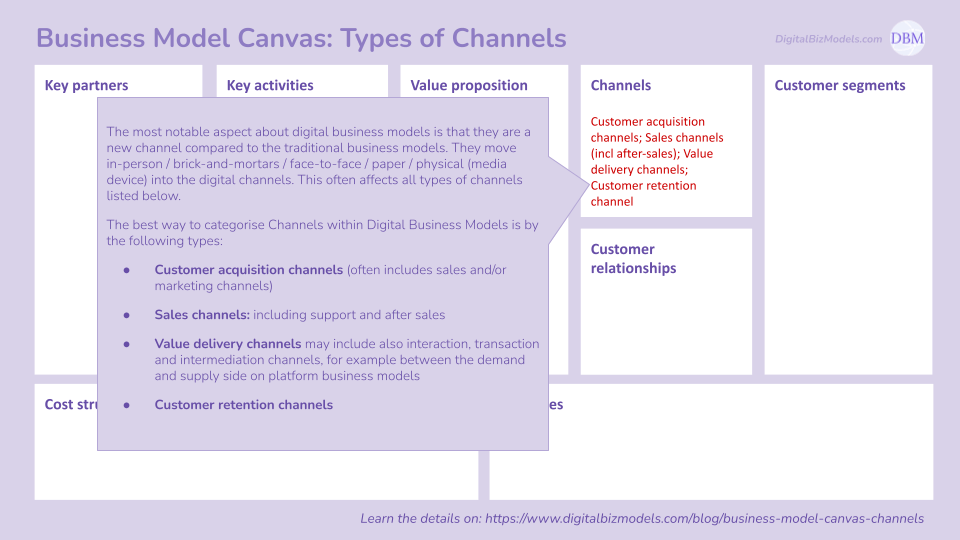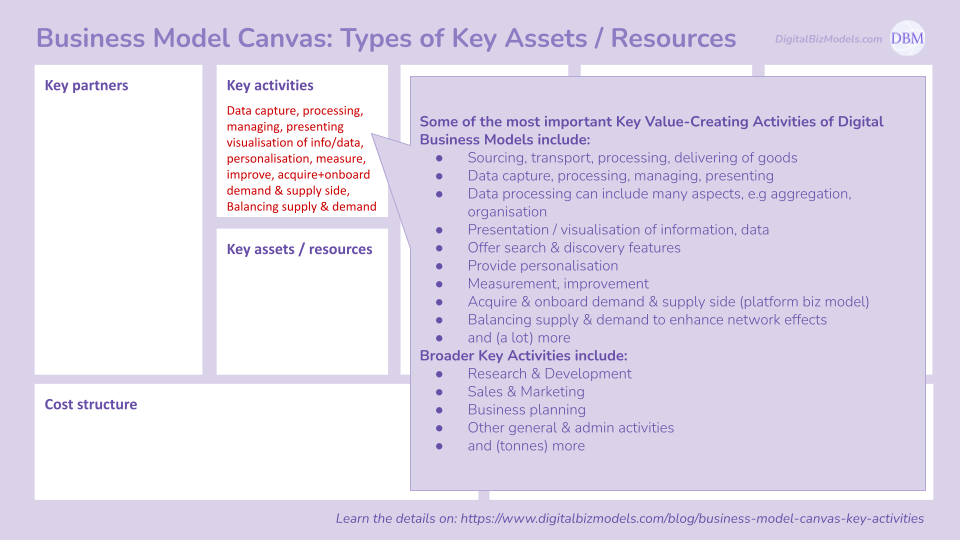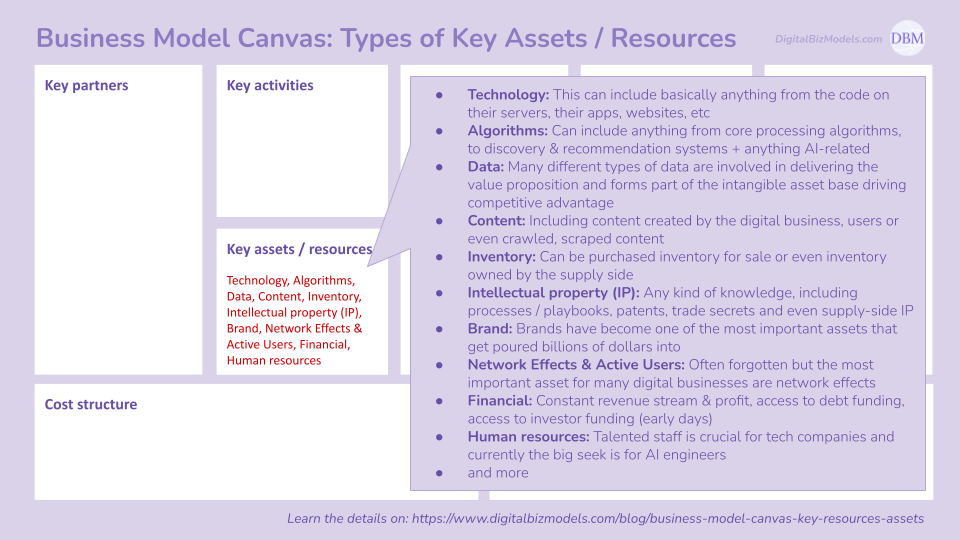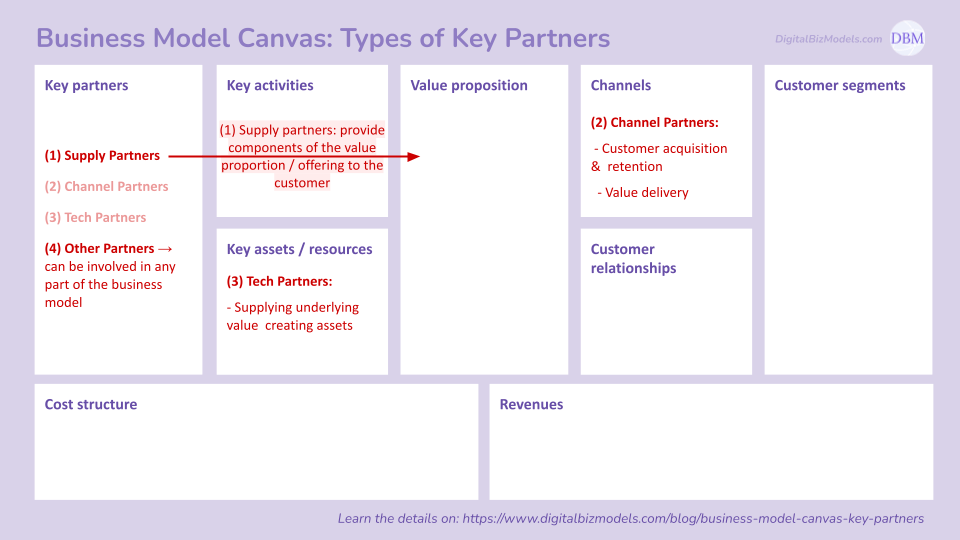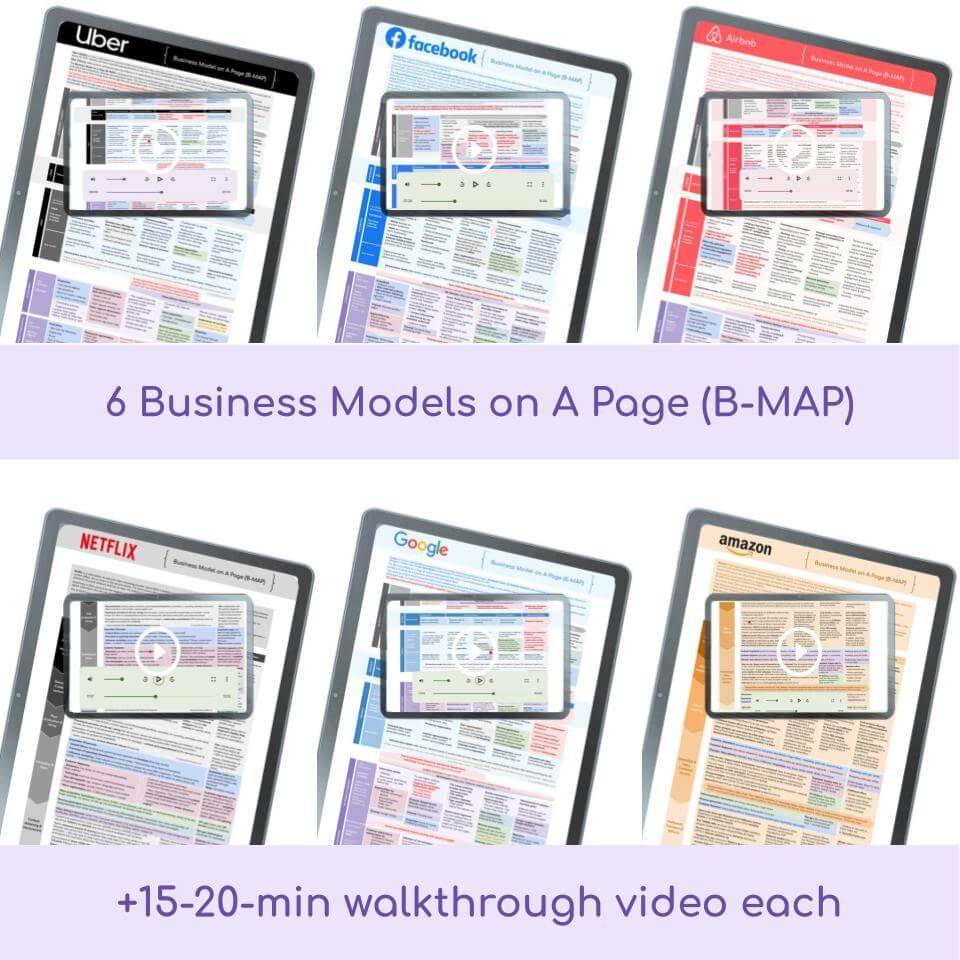Business Model Canvas - Value Proposition
This article will cover the various types of Value Propositions tailored to digital business models.
Value Proposition is one of the sections of the popular Business Model Canvas tool.
The Business Model Canvas was devised by Alex Osterwalder
(1) Types of Value Propositions
The best way to categorise Value Propositions within Digital Business Models is by vertical:
eCommerce: search, selection and purchase of goods online and delivery to doorstep
Content & Media: discovery and consumption of content and media online
Search, Vertical Search, Insights: search and discovery of topics of interest online
Social & Communication: communication via electronic means and different types of media
Online Travel, Dining, Events, Attractions: search, discovery and purchase/reservation of hotel rooms, flights, food, restaurant bookings, etc online
Asset Sharing & Service Intermediation: Sharing of assets (e.g. cars, homes) and/or intermediation of service provision (from transport to professional services) online
FinTech: Financial services and technologies provided online
EdTech: Educational content & services delivered online
Digital Health Tech: Our coverage focusses on the digital provision of health care related services online
Hardware/Software Tech Platforms: Underlying software & hardware technologies as well as digital consumer electronics
Software-as-a-Service: Provision of software via online channels
That said, there a number of common themes though we encourage never to look at generic lists and be more specific like in the list above:
Online instead of offline → pace of transactions + electronic consumption (content, media, inform)
Search & discovery
Pace
Convenience
Choice comparability
Price comparisons
Personalisation
Delivery
Note that in this list we have been focussing on the main end-consumer-facing value propositions. In each of these verticals there can be additional supply, backend and intermediary value propositions that dont interact with the end consumer.
Value Propositions by Verticals
Categorising Value Propositions and - in fact - business models around the key value propositions / vertical is the most instructive approach to learning about Digital Business Models. That’s why we have created a course for you that gives you a great overview about these 11 verticals.
(2) Examples of Value Propositions
Now let’s take a look at examples of Value Propositions. The best way to do so is - as always - by looking at concrete, vertical-specific examples.
eCommerce
Examples of digital businesses in the eCommerce vertical include Amazon, Etsy, Wayfair and thousands of others.
Value Proposition examples Amazon:
Search, selection and purchase of goods online and delivery to doorstep
Low Prices:
Given sufficient scale there are considerable savings on prime real estate (shop) that can be passed on to the customer
Scale also leads to better bargaining leverage with inventory suppliers
Fast Delivery:
A tremendous warehousing and fulfilment network down up to 1 hour deliveries on certain items in metropolitan locations
Large Choice of products:
Most consumer goods categories from apparel to appliances
Powerful sales pages (and backend) with filters, navigation, etc
Also increasingly entering groceries and fresh foods (latter being higher margin categories)
Media is delivered via a digital infrastructure: Books, Movies, Music - this segment is actually falling under the Content & Media vertical
Subscription offerings:
For groceries via Subscribe & Save
Kindle Unlimited for books, Audible for audiobooks, etc
Prime for a one-off delivery fee payment plus a slice of other offerings
Typical types of value proposition within digital business models shown in the biz model canvas
Content & Media
Examples of digital businesses in the Content & Media vertical include Netflix, YouTube, Spotify, Medium, Apple News and many more:
Value Proposition examples Netflix:
Discovery and consumption of content and media online
Vast content selection
Netflix-exclusive content (created & owned by Netflix)
Ongoing addition of new content
Convenience and mobility: ability to watch anywhere and on "any" device
No ads: option to choose an ad-free pricing tier (default)
On-demand consumption: Users can watch anytime unlike linear TV
Ability to binge watch: All episodes of one season of a series become available at the same time
Simple pricing: Using a flat fee (3 plans to choose from) with unlimited access, no tiers, no premium content at additional charges, no pay-on-demand (for now and potentially subject to change)
Easy cancellation: Cancel (and resubscribe) at any time
Personalisation: through a recommendation system that takes into account what each individual has watched and liked
Localisation: subs & dubs for increasing amount of locations and more cultural diversity within the titles
Sharing economy
Examples of digital businesses in the Asset & Service Sharing (=Sharing Economy) vertical include Uber, DoorDash, Airbnb among others:
Value Proposition examples Airbnb:
The value proposition includes the sharing of an asset (the place to stay) as well as a provision of a service component (hosting)
As with all platform business models, we need to look at the value proposition to all involved participant types, in this case consisting of guests and hosts
Value proposition for guests
Choice & variety
Cheap(er): often cheaper than hotels
Authenticity / community
Value proposition for hosts
Income generation
Convenient transactions
Risk minimisation
Online Travel
Examples of digital businesses in the Online Travel Agencies (OTA) vertical include Booking.com, TripAdvisor and Expedia:
Value Proposition examples Booking.com:
Value proposition for travellers
Cheap(est) prices: via called rate parity clauses with hotels (where permitted)
Amount of choice
Reduction of risk via reviews and ratings
Useful app & website: certainly some of the best travel websites & app
Value proposition for hotels
Incremental revenue: or the promise thereof as well as the risk of losing revenue to hotels that participate
Demand / revenue management: hotel can adjust dates & availability, e.g. sell strong season via their own site and put lower seasons on Booking.com
Global reach: Booking.com helps hotels to reach global markets
Social Media & Search
Examples of digital businesses in the Social Media vertical includes Meta’s Facebook, Instagram, X. Examples of Search Platforms include Google, Bing and others.
Value Proposition examples Google:
Google is a platform business model with 3 participant types: Search Users, Website Owners and Advertisers (being a to-be-distinguished subset of Website Owners), hence we need to look at the Value Propositions for each of these
Value propositions for Search Users:
Find/access information & solutions to problems
Lower search costs/efforts than traditional methods
Accessing information in most life situations
Value propositions for Website Owners:
Access to audience: access to incremental audience
Well-matched traffic
Insights via free analytics tool Google Analytics
Value propositions for Advertisers:
Supply of new targetable advertising spaces
Better advertising ROI an/or avoiding the risk losing customers
Low barriers to entry and exit + scalability
Software-as-a-Service:
Examples of digital businesses in the Software-as-a-Service vertical include Salesforce, most Adobe products and hundreds of thousands more cloud-based software products:
Value Proposition examples productivity SaaS:
Align with modern organisational principles
Reduce admin work by moving data entry to the source
Provide features useful for all that are affected by the software (role-based)
Self-explanatory
Engaging to use
Have various types of support functions and
Provide immediate use
Critiquing the Biz Model Canvas (Value Proposition section)
Now that we have covered the Value Proposition section of the Business Model Canvas (BMC), it’s also time to discuss honestly some shortcomings of the BMC relating to this aspect.
“Newness, Performance, Customization, Getting-the-job-done, Design, Brand/Status, Price, Cost reduction, Risk reduction, Accessibility, Convenience/Usability”: these are the Value Proposition types listed in the BMC. Of course, nothing wrong with it as such but also very high level and - frankly speaking - not much of a guide. But that’s understandable as the BMC is aiming to please all business models. With our focus on digital business models only, we have been able to provide a far more specific list of Value Proposition with many relevant examples that can be transferred to other ideas.
We hope you enjoyed our coverage of Value Proposition including the differentiation of different types and the extensive list of examples relevant for Digital Business Models.
What we like more than the Business Model Canvas: the B-MAP
We have used the business model canvas for almost 10 years on a very regular basis and to cover many dozen companies. Over time, we have realised that it has its limitations.
That is why we have decided to use a presentation format based on the time-tested Value Chain method devised by Strategy Professor Michael Porter. It is a far better way to grasp key aspects of a digital business model than the canvas.
Prof Porter is the most cited scholar on competitive strategy and digital transformation (with almost 10x more citations than the respectively 2nd ranking scholar).
Our Business Model on A Page (B-MAP) is specifically developed for digital business models and based on the Value Chain.
We have decided to price our B-MAPs super-affordably to give everyone (including our many valued followers from lower-income countries) the opportunity to get kick-started on their innovation journey with this high value resource that includes a B-MAP + walk through video for each of the digital companies that are covered!


